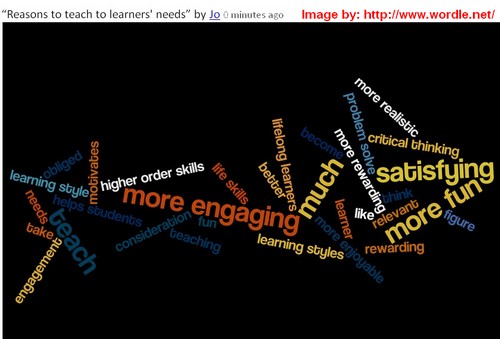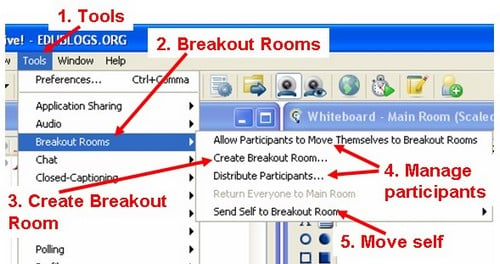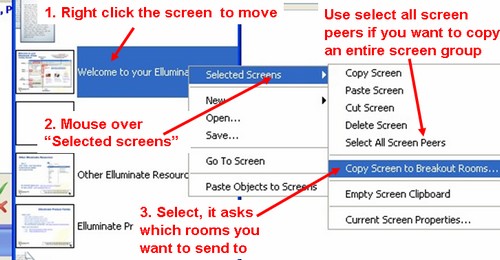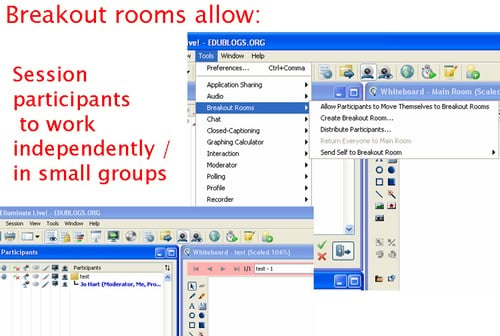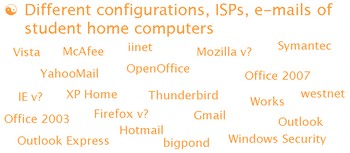This week’s Edublogs Webinar (recording here ) presented by Tomaz Lasic was a terrifically informative session that opened my (and I think many others’) eyes to the myriad ways of using Moodle in teaching.
The Webinar
This was a well attended session with our usual global mix from Australia, the USA, Canada, South America and Europe. There was also a variety of Moodle experience ranging from none to very experienced, with almost half of us falling into the “novice” group.
Tomaz began with a look at the principles underlying Moodle …
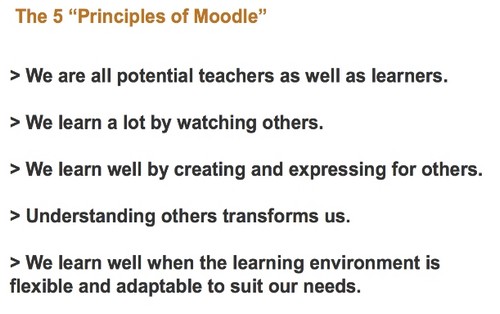 … and two questions to ponder during the session.
… and two questions to ponder during the session.
He then moved on to take us through the processes involved in building a course. This part of the session was packed with information! Tomaz used examples throughout from a course developed in his recent teaching role, showing us how the learners had become part of the development process and thus shared ownership of the course. A superb teaching strategy and fascinating to see how it can be implemented with Moodle – a huge contrast with the way many people use Learning Management systems (LMS) of any type ie as a repository for documents. To my relief (as a Moodle novice) most of the questions arising in text chat were ably fielded by the more experienced Moodle users in the audience. This meant that Tomaz was able to maintain the flow and his train of thought giving us a fascinating insight into the thoughts behind the development of the course. As a couple of people said at the end it would have been nice to see the options in action, but there would have been the inevitable trade-off in terms of covering less ground. If Tomaz had done this the focus would necessarily have been on a far smaller part of what is available and we would not have had such a clear picture of the many options available in Moodle.
To take us full circle at the end of the session Tomaz returned to the underlying principles of Moodle and the questions he posed at the beginning. He invited whiteboard comments on several aspects of using Moodle including how best to approach teaching with Moodle.
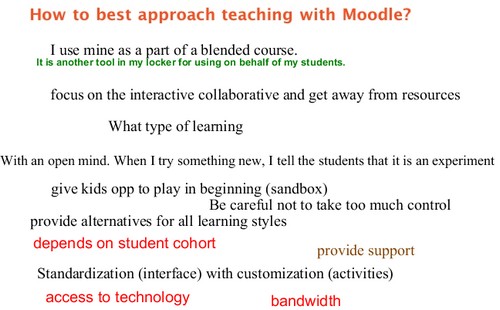 Finally there was some excellent and extremely positive feedback. This was a great session all round with much food for thought and exciting strategies shared.
Finally there was some excellent and extremely positive feedback. This was a great session all round with much food for thought and exciting strategies shared.
Next week
 Our next Webinar is an Edublogs Serendipity – unconference session so bring along your hot topics and burning issues (what makes you spit with anger or thump a tub with passion) and throw them into the melting pot for the poll to choose our topic in the first ten minutes.
Our next Webinar is an Edublogs Serendipity – unconference session so bring along your hot topics and burning issues (what makes you spit with anger or thump a tub with passion) and throw them into the melting pot for the poll to choose our topic in the first ten minutes.
Join us on Thursday April 1st at 23:00 GMT/UTC (7pm USA EST, Midnight BST) or Friday April 2nd at 1am CEST,7am West Aus, 10am NSW, depending on your timezone – in the usual Elluminate room
Also next week I am also doing a webinar on Wednesday March31st at 09:00 GMT/UTC (5am USA EST, 10am BST, 11am CEST, 5pm West Aus, 8pm NSW) depending on your timezone. This is “E-blends and Regional/Remote Students” in the LearnCentral public webinar room
This will be an interactive session aimed at exploring some of the challenges (and some possible solutions) of using e-learning blends for flexible delivery to a highly diverse and geographically scattered student group across four AQF levels of literacy, numeracy and study skills.
- Context – where is this happening?
- Who are the students?
- Blending the learning – how and why
- Some of the challenges.
- Meeting the challenges.
- Where to go next?
- Feedback
Although this is under the banner of eT@lking in the Australia Series it is likely to be of interest to anyone working with distance learners wherever they are in the world.

